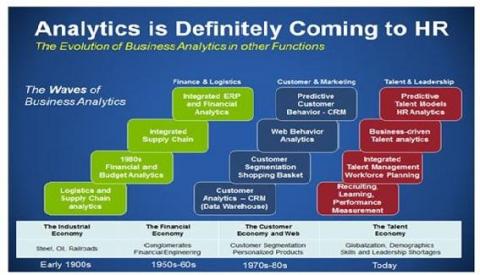How HR Is Being Transformed With Workforce Analytics
Apr 28,2016
Demand for workforce analytics has soared - as business leaders are recognizing that hiring the right talent and getting them on board is just as important for bringing success to the devised strategies. Also at the same time it is important to analyze as well as access the right details for supporting business decisions related to talent. The requirement for better analytics has changed drastically. While until a few years back, it was an intellectual curiosity and chronic pain-point for small cadre within Human Resource Departments. However, today it is an acute need for transformation.
The -changes emerge from the topmost positions as CEOs have started asking for better and detailed information related to talent for supporting realization of business strategy. Those Human Resource departments that are capable to deliver analytics might evolve into strategic partners and help an organization in achieving a sustainable competitive advantage for their company.
For their role, many HR departments have started realizing that providing the right insight at the right time creates of new level of competency. It should embody the ideas and strategies for the development of new workforce analytics deliverables which can be produced by the organization.
In the era of highly competitive economic environment, there is no doubt that workforce analytics play a crucial role when it comes to addressing issues related to strategic human capital challenges. These are the fundamental capabilities of Human Resources and what organizations are seeking. Business Leaders are starving for a more proactive role of HR for driving business strategy. As far as implementation of workforce analytics is considered, it is hindered by both skill and technical ability.
According to recent studies and research conducted, it has been indicated that HR professionals just like their counterparts executives and corporate finance, require a steady analytical reference point for making human capital decisions which impact the results of business. In addition to providing the needed resources for transforming data into insights, workforce analytics let HR executives be more engaged and involved in the formulation of strategy for corporate organizations. The end result is greater because it is based on facts. Thus, decision making is aligned with the long term business goals and objectives of the company.
Workforce related issues such as rewarding, acquiring and retaining top talent, human capital concerns, and doing less with more is always prominent in the business world. Couple that with tactical problems such as need for historical and global data management, disparate HR systems and self-service reporting. Business organizations are compelled to partner with their HR leaders and continue to improve their capability for gathering the data they need through workforce analytics.
Photo courtesy of http://www.jobscience.com/blog/reducing-employee-turnover-predictive-hrms-software/





